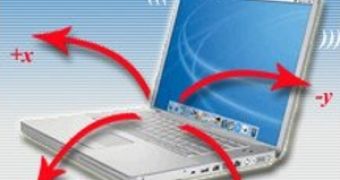A new project with a bold goal has recently emerged: provide several crucial seconds of warning before an earthquake occurs. Following the example of the SETI@home project, the Quake Catcher Network (QCN) also relies on using a wide network of personal computers in order to do the job. The idea was surprisingly inspired by a group of hackers calling themselves the teenage mutant ninjas who managed to access Apple computers' sudden motion sensor three years ago.
The tiny accelerometer chips are created in order to shield the more sensitive hardware parts of a laptop's hard disk from sudden movements and shocks, but Elizabeth Cochran from the University of California, Riverside, and Stanford University's Jesse Lawrence thought that using them in tens of thousands could also prove efficient in predicting quakes. Comparing the signals received from such a vast network would also allow them to rule out the motion caused by actions such as typing.
The QCN's functionality is based on the same volunteer computing software platform used by SETI@home, allowing for anyone's computer to join in and help the project. Currently, the network is comprised of 1,500 laptops which have already detected a number of earthquakes, such as July's 5.4 one in Los Angeles. The cost of scientifically-used sensors ranges between $10,000 and $100,000, and their sensitivity is much higher.
But, according to Lawrence, “with many more cheap sensors, instead of guessing where strong motions were felt by interpolating between sensors, we should be able to know where strong motions were felt immediately, because we have sensors there”. Ultimately, having enough sensors, “we should have the ability to triangulate earthquakes for earthquake early warning, providing several seconds of warning before the earthquake hits neighboring populated regions,” he adds.
Currently, research is focused on implementing USB-connected stand-alone detectors for desktop units for the same purpose. “The USB accelerometers can also mount directly to the floor, which means they will have better sensitivity to ground motions," shares Lawrence.

 14 DAY TRIAL //
14 DAY TRIAL //